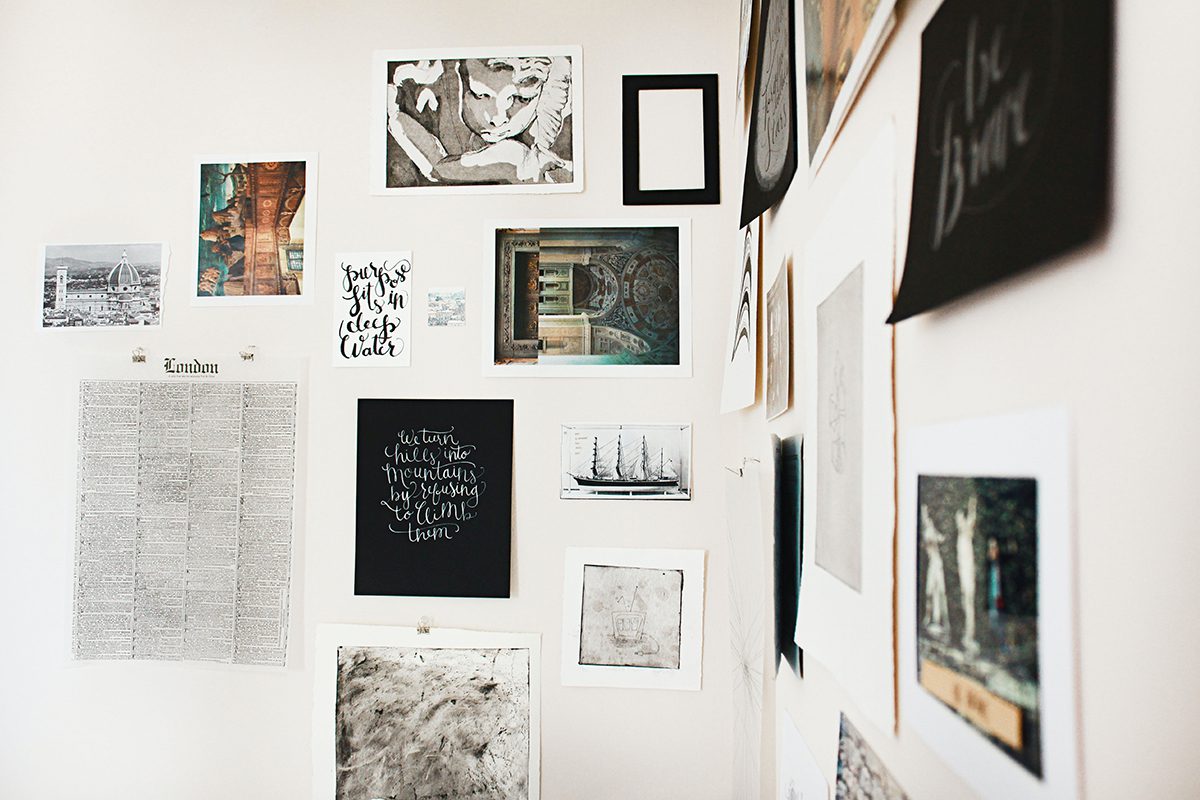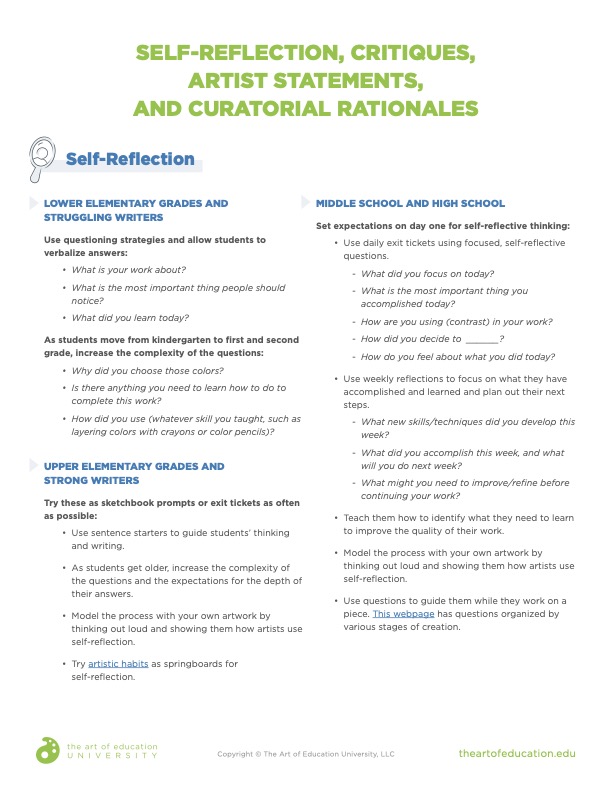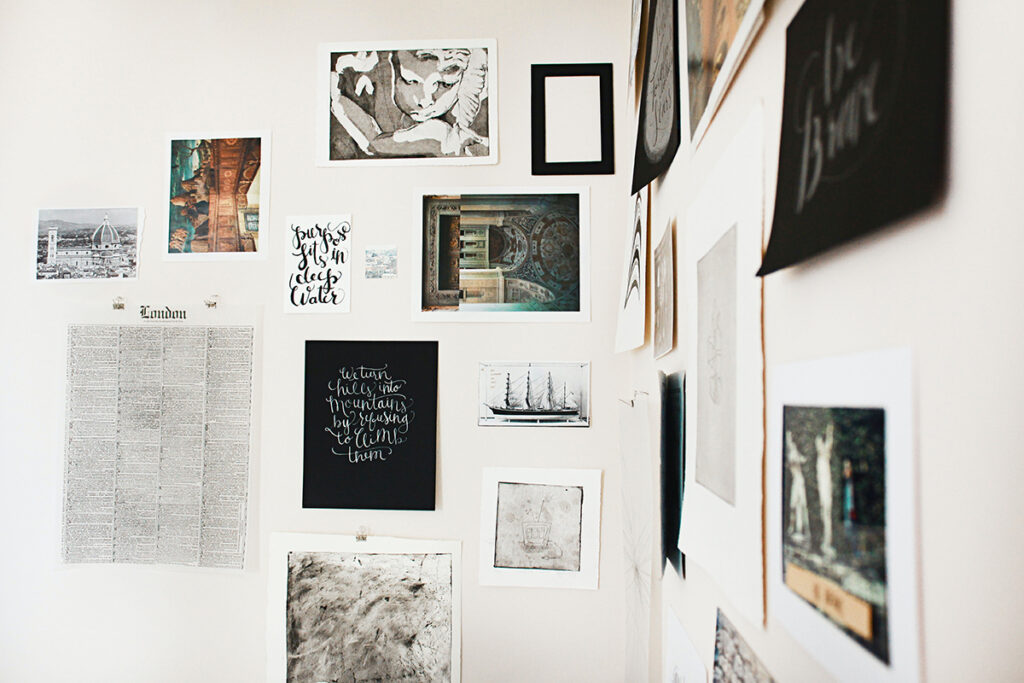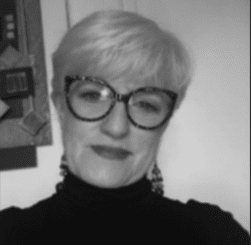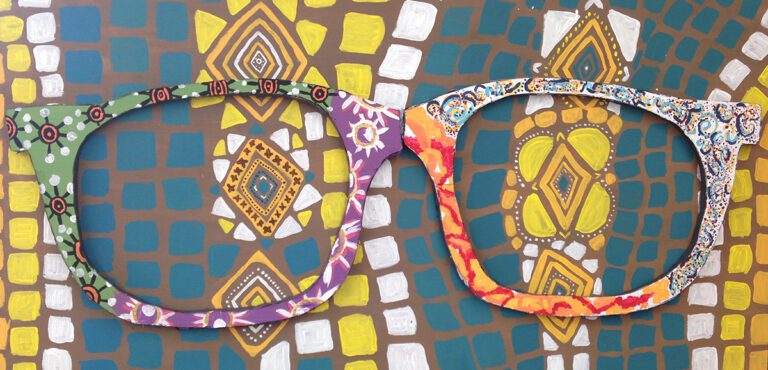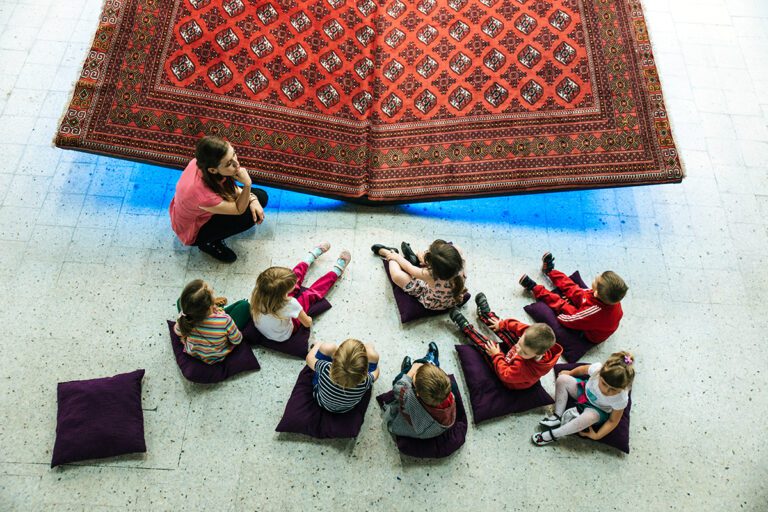Teaching art in the 21st-century is different from previous centuries. (Yes, some of us have taught in two different centuries!) Like many art teachers, you may be trying to transition to more student-centered pedagogies such as choice-based art education, project-based learning (PBL), Inquiry-Based Learning, STEAM, or another constructivist teaching approach.
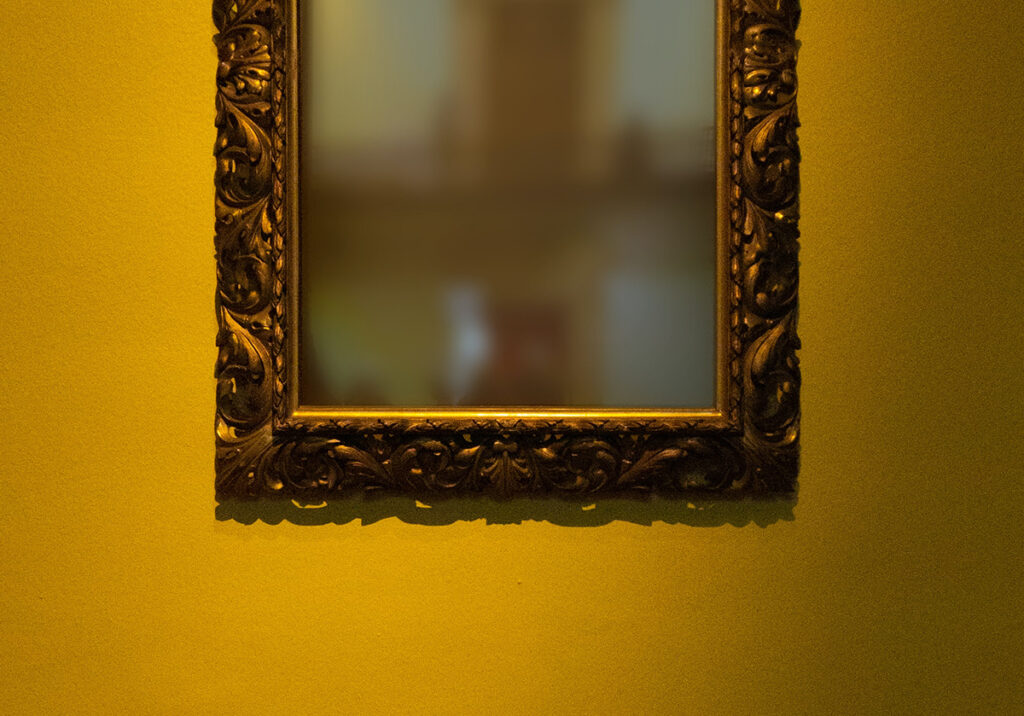
The goals of student-centered learning and teaching are to:
- Help develop critical thinking and self-reflection skills.
- Provide space to self-advocate in the learning process.
- Give enough room to fail and learn from missteps.
- Show specific techniques for accessing the information relevant to their interests.
Four artistic processes can help facilitate successful student-centered learning:
- Self-reflection
- Critiques
- Artist statements
- Curatorial rationales
Are you finding it difficult to figure out how to teach these processes and fit them into your curriculum and limited class time? Let’s look at these processes, their purposes, and how and when to teach them to your students at various ages and grade levels. We even have a handy packet for you to download so you can easily reference all these tips and strategies.
Download Now!
Self-Reflection
“Self-reflection basically gives us an opportunity to pause and look back so that we can look ahead with more passion and vitality.” Self-reflections are a way for students to document what they have accomplished and what they have learned. They can engage with artistic thinking about how they envision their work or discover what skills they need to develop. It’s also a way to document ideas the current work may inspire. Students can find solutions to design problems they will encounter later in art class or other contexts later in life.
Self-reflections can include information the student will need when they return to class. Examples may be how to mix a particular color or questions they need answers to before moving on. “Looking back so we can look ahead” is important for students to recognize their progress and accomplishments and be motivated for their next work session.
In K–12 art education, we want students who put deep thought into their work and ideas. It is important for students to step back and evaluate their work with a critical eye and be able to envision what their next steps are. We want them to develop all of these skills as habits of mind. Artists, designers, engineers, or anyone trying to solve a problem in their community or workplace engages in self-reflection. Honest, thoughtful reflection is an essential life skill. Self-reflection should be taught and modeled at the beginning of the year, then openly expected for the remainder of the year, and retaught and reinforced as needed.
Lower Elementary Grades and Struggling Writers
Use questioning strategies and allow students to verbalize answers:
- What is your work about?
- What is the most important thing people should notice?
- What did you learn today?
As students move from kindergarten to first and second grade, increase the complexity of the questions:
- Why did you choose those colors?
- Is there anything you need to learn how to do to complete this work?
- How did you use (whatever skill you taught, such as layering colors with crayons or color pencils)?
Upper Elementary Grades and Strong Writers
Try these as sketchbook prompts or exit tickets as often as possible:
- Use sentence starters to guide students’ thinking and writing.
- As students get older, increase the complexity of the questions and the expectations for the depth of their answers.
- Model the process with your own artwork by thinking aloud and showing them how artists use self-reflection.
- Try artistic habits as springboards for self-reflection.
Middle School and High School
Set expectations on day one for self-reflective thinking:
- Use daily exit tickets using focused, self-reflective questions.
What did you focus on today?
What is the most important thing you accomplished today?
How are you using (contrast) in your work?
How did you decide to ______?
How do you feel about what you did today? - Use weekly reflections to focus on what they have accomplished and learned and plan out their next steps.
What new skills/techniques did you develop this week?
What did you accomplish this week, and what will you do next week?
What might you need to improve/refine before continuing your work? - Teach them how to identify what they need to learn to improve the quality of their work.
- Model the process with your own artwork by thinking aloud and showing them how artists use self-reflection.
- Use questions to guide them while they work on a piece. This webpage has questions organized by various stages of creation.
Critiques
A critique is a detailed analysis and assessment of something. In our case, it’s artwork. But a critique is more than saying what you like or don’t like about a work of art. It’s also not about getting or giving a grade.
Critiques should provide an honest look at students’ work in a positive, nurturing, and collaborative atmosphere. They provide an opportunity for students to accept and incorporate criticism into their work to refine and improve it. This will develop critical skills for our students’ futures, as critiques often mimic work performance and project evaluations. For students to become willing participants and open to feedback on their work, first focus on making critiques fun and useful.
Set the stage for constructive critiques with these two tips:
- Conduct historical and contemporary art critiques, but save the Judgment component for another time. This will allow students to focus on the process rather than on judging the product.
- Focus on a particular aspect of the art and/or a concept you are teaching.
What elements and principles did the artist use to create emphasis?
How did the artist use contrast?
How does the color contribute to creating a mood?
What is the theme/idea of the work?
How do you know this?
Lower Elementary
Focus on celebrating their ideas and work, as well as getting used to sharing in front of the class with these questions and prompts:
- Tell me about your work.
- Where did you get this idea?
- I like the way you (colored in the sky all the way down to the ground.)
- I wish (the dragon was larger since it’s the most important part.)
- Here are some fun, creative ways to conduct critiques to develop a positive mindset around the refinement and revision of student artwork.
Upper Elementary
As students advance through the grades, have them do peer-to-peer, small group, and whole-class critiques during the creation process as well as when students finish a piece.
Ask these three questions of viewers and then ask the artist if there was something they missed or misunderstood:
[special-list]
- What do you see?
- What do you think/feel?
- What in the artwork makes you think/feel that?
Middle School and High School
First and foremost, create a positive, nurturing mindset for critiques. Set strict ground rules similar to these:
- Emphasize that it’s about the work, not the person, and the student artist must disassociate from their work during a critique.
- Focus on the goal of a critique, which is to analyze.
- Conduct formal, scheduled critiques as well as impromptu, informal ones when you see a student “hitting a wall” or needing some constructive feedback.
- Differentiate between the roles of an Artist, Viewer, and Moderator. Read the Beginner’s Guide to Constructive Critiques for helpful information.
- Check out these 15 Questions to Inspire Quality Art Critiques. For a quicker, more informal critique, try the three questions method mentioned above for Upper Elementary.
All Grades
Try Pair-Share or Gallery Walks with these questions for both work-in-progress pieces and finished works:
- Which artwork shows the best use of contrast?
- What title would you suggest for this piece?
- What is a question you have about the work?
- What do you see?
- What do you think the work is communicating?
- How is this different from the artist’s intent?

Artist Statements
An artist statement in K–12 art education is a short narrative about an artwork. It is generally written in the first person. It goes into more depth about the artist’s ideas and inspiration. It also helps the viewer understand the work.
Artist statements are generally written about a single work of art. Several unrelated pieces in an art show by one artist may include a different statement for each piece. Some teachers use artist statements as an assessment tool for completed work. Regardless of how you use them, consider what you will have students focus on when writing their artist statements.
Additionally, the writing prompts or questions should be constructed so that students are being asked to consider their prior self-reflection and critique feedback in their writing. Although self-reflection can look similar, artist statements are a culmination of the self-reflection that has taken place during the creative process and from engaging in formal and informal critiques. It is noteworthy to add that students must first be adept at self-reflection at all points during the creative process. This will help them become effective participants in individual or group critiques. It will also help them write interesting and informative artist statements.
Teach artist statements as students begin to finish their work and ready it for display. Whether you use the artist statements as an assessment tool or for an art show, be clear about what students need to be thinking about. Tell them what the expectations are, and show them some examples of well-written artist statements, along with some that are not.
For non-writers, try these two ideas for artist statements:
- Audio or video record their responses and create a QR code to display with their work that will take the viewer to the recording.
- Transcribe their responses with the help of parent volunteers, older students, and/or teacher assistants.
Elementary
Create a template for students to write their artist statements in Grades 2–5. Scaffold the forms for various writing levels by using sentence stems for beginning writers. For older students, provide questions with set expectations, such as complete sentences and two sentences or more per answer. As a baseline, some teachers require one sentence per grade level.
In Engaging Learners Through Artmaking, Katherine Douglas and Diane Jaquith suggest using these prompts:
- Tell me about your artwork.
- What do you want people to notice?
- Where did you find this idea?
- How did you make this?
Middle School
Continue to provide a variety of options for students who may still struggle with written expression:
- Allow video or audio recordings.
- Provide sentence stems and questions.
- Provide peer assistance where appropriate.
High School
Provide differentiation as needed and appropriate, but also demand more depth and critical thinking about their work.
Focus on these three tips:
- Give clear directions and criteria.
- Emphasize the purpose for completing them.
- Display a typed version with their work.
Middle School and High School
Check out this guide to writing well-written artist statements appropriate for all secondary students.
Artist Statements as Assessments:
Many teachers use self-reflection as a formative assessment and artist statements as a summative assessment. Below are some ideas and tips to make this happen successfully.
- Compose process displays as artist statements that contain images and descriptions of the work in progress from beginning to end, along with the finished work. This can be done online or as a physical display.
- Use a blog platform for artist statements and process documentation. Students can leave feedback and questions through the comment feature.
- Write an artist statement for all completed work, whether or not it was successful.
- Articulate what was learned in the process, even if it was deemed unsuccessful. One can learn as much from a failed work of art as from a successful one!
- Require the appropriate use of art vocabulary.
- Adjust the artist statement prompts to hone in on what your curriculum is focusing on.
Having students write artist statements to address meaningful and relevant prompts will aid them in articulating their artistic process. It will also provide you with a way to grade them on their process rather than their product. When students know they are being graded on the process and not the artwork, they will focus on the process more. Consequently, their artwork will improve. All of those students who are afraid of getting a bad grade because they “can’t do art” are now focusing on something they feel they can control.
Curatorial Rationales
Curatorial rationales, such as those used in International Baccalaureate (IB) Schools, are different from artist statements. In IB schools, visual art students are required to create a final display of a coherent body of related works. This display is accompanied by a curatorial rationale, which an examiner uses for assessment. “Writing the Rationale is part of the process of self-reflection, decision making, and of understanding of [sic] the relationship between artist and audience.”
Because IB Schools focus on critical thinking skills, curiosity, and solving complex problems, these rationales go into greater depth than the traditional K–12 artist statement. However, the idea behind this process can also be implemented in general high school art classes to add an important and stellar writing component to your curriculum. It can be a great authentic mid-term or final exam instead of the traditional test format.
For more submission details on IB curatorial rationales, check out this article. Take a look at an excellent example of an IB student’s rationale here.
The curatorial rationale is generally broken down into three parts:
- Overview, Concepts, and Ideas
What is your work about?
What are the underlying themes or threads?
How did your theme come about?
What are the concepts, issues, or ideas you have explored here?
How are they linked in your work?
What experiences have contributed to the making of this work? - Selection of Works
What materials and techniques have you used?
Why did you choose these?
Do the materials have an impact on the meaning of the work?
How do you justify your selection of works? - Relationship With the Viewer
How does the way the work is presented contribute to how it communicates with the viewer?
How did you consider the arrangement of the works within the available space?
Do you have an overall vision for presenting this body of work?

Here are some journal reflections to help students brainstorm and process before writing:
- What media do you work with?
- What interests you about this type of work?
- What themes, concerns, and ideas have you explored in this work?
- Is there a relationship between the media you used and the ideas you worked with?
- What outside interests, artists, encounters, or experiences have influenced your work?
- What ties your individual pieces of work together into a cohesive body of work?
- Is there an “intention” behind the work?
- What do you want the work to achieve?
- How do you want your audience to experience it?
- How have your display methods of display (how the work is arranged and presented) contributed to the viewer’s experience?
- Imagine you could have any possible space or display method. What is your vision for presenting this body of work?
Why is this important?
These artistic processes are embedded within the National Core Arts Standards. Instruction and expectations for these processes should be included in all art curricula that strive to meet the NCAS.
Read the standards again closely and see how these processes align with them:
- Anchor Standard 3: Refine and complete artistic work.
Enduring Understanding: Artists and designers develop excellence through practice and constructive critique, reflecting on, revising, and refining work over time. - Anchor Standard 4: Select, analyze, and interpret artistic work for presentation.
Enduring Understanding: Artists and other presenters consider various techniques, methods, venues, and criteria when analyzing, selecting, and curating objects, artifacts, and artworks for preservation and presentation. - Anchor Standard 5: Develop and refine artistic techniques and work for presentation.
Enduring Understanding: Artists, curators, and others consider a variety of factors and methods, including evolving technologies, when preparing and refining artwork for display and or when deciding if and how to preserve and protect it. - Anchor Standard 7: Perceive and analyze artistic work.
Enduring Understanding: Individual aesthetic and empathetic awareness developed through engagement with art can lead to understanding and appreciation of self, others, the natural world, and constructed environments. - Anchor Standard 8: Interpret intent and meaning in artistic work.
Enduring Understanding: People gain insights into the meanings of artworks by engaging in the process of art criticism. - Anchor Standard 9: Apply criteria to evaluate artistic work.
Enduring Understanding: People evaluate art based on various criteria.
Engaging students in meaningful self-reflection and critiques as well as writing thoughtful artist statements and curatorial rationales will ensure students are meeting these standards.
These processes are also essential to building 21st-century skills. The Brookings Institute conducted a meta-analysis of education department documents across several countries. They identified several common skills and competencies across all national documents.
The most common skills and competencies cited were:
- Critical, innovative, and reflective thinking
- Reasoned decision-making
- Communication
- Collaboration
The art classroom is where these skills and competencies are explicitly and methodically taught and applied every day. Art educators stand at a fork in an important road. One way takes us to more budget cuts and less art instruction for students. The other way takes us on a path to advocate for our subject matter. These skills are important for all students to develop. We need to show the relevance and significance of art education in targeting these skills. If we do not teach them, who will?
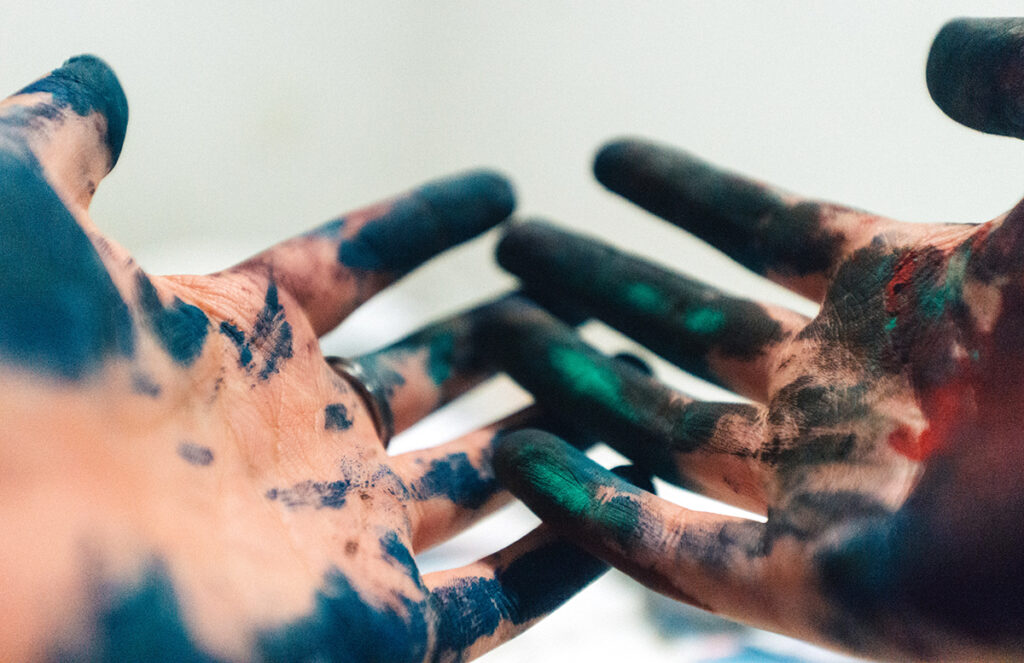
So, how do you fit all this in?
As stated above, these processes fall under the umbrella of the NCAS and should be built into your curriculum. These are not add-ons or extras. They are essential parts of your curriculum. Weave them into your daily routines in order for students to adopt them as habitual ways of working and thinking. Taking the time to model, teach, and reinforce these processes will go a long way in making them part of your classroom culture. How you teach each of these processes will be different depending upon the grade level you teach, your schedule, and the academic abilities of your students.
It is important to remember all students need to know:
- Why they are doing these things
- The purpose of each process
- How it will benefit them in the short and long term
- How to engage in each process
- What artists think about while they are self-reflecting
- Questions artists ask themselves
- How artists reflect on, react to, and use the feedback received during a critique to refine, improve, and finish their artwork
Teaching any process without putting it in a meaningful context is not going to create the buy-in from students we want. Show them artists are not just born with the knowledge and expertise to be brilliant artists. Instead, they use these processes to become better at their work.
When your scheduled time with a group of students is limited, look at ways to scaffold these skills across grade levels. Most students in elementary will have the same art teacher (or two) every year. It is manageable to scaffold and build these skills across grades.
In middle and high school, try to collaborate with your colleagues in scaffolding and building these skills across grade levels. Subject area departments should always vertically align the curriculum in order to build the skills and competencies from grades K–12. Include these processes in the curriculum so all students can have as much exposure to and practice with them as possible.

Teaching students how to self-reflect, participate constructively in critiques, and write strong artist statements or curatorial rationales will not only improve their artmaking but also provide them with essential life skills. Not all students will pursue art after graduation, but we can equip them with the essential skills of self-reflection and communication through writing. Start by trying out these processes with the tips and strategies outlined above. Strive to create an atmosphere where all of these processes are expected, transparent, honest, and useful to your students. This will allow them to successfully navigate the 21st-century world in which they live.
National Core Arts Standards (2015) National Coalition for Core Arts Standards. Rights Administered by the State Education Agency Directors of Arts Education. Dover, DE, www.nationalartsstandards.org all rights reserved.
NCAS does not endorse or promote any goods or services offered by the Art of Education University.
What struggles have you encountered in implementing these artistic processes, and what solutions did you find?
How will you introduce these processes to your students next year?
Magazine articles and podcasts are opinions of professional education contributors and do not necessarily represent the position of the Art of Education University (AOEU) or its academic offerings. Contributors use terms in the way they are most often talked about in the scope of their educational experiences.
